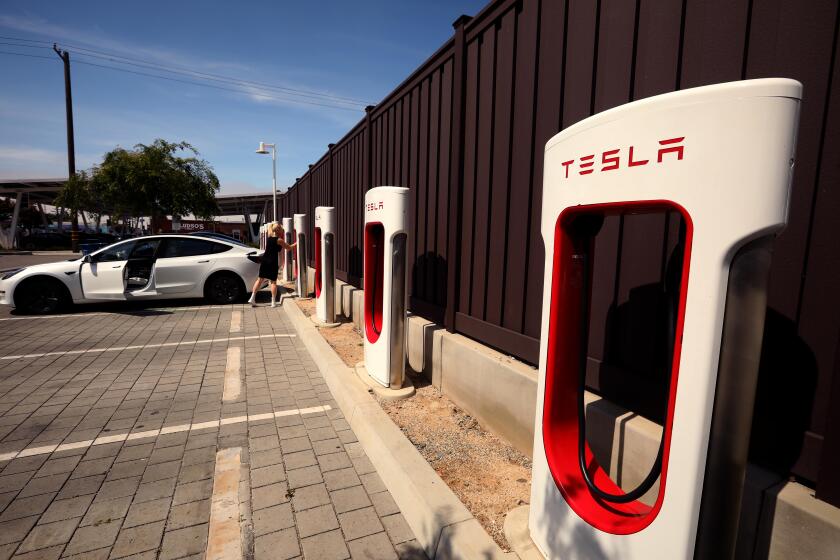Volkswagen packs a lot into the compact 2010 Golf 2.5
Before she became President John F. Kennedy’s favorite blond birthday singer, Marilyn Monroe was born Norma Jeane Mortenson. Rapper Diddy was previously P. Diddy, Puff Daddy and before that plain old Sean Combs. By the time you finish reading this, he’ll probably call himself “Did.”
Which brings us to the 2010 Volkswagen Golf 2.5.
The U.S. version of the car, available in both two- and four-door styles, was formerly known as the Rabbit (2006-2009). Prior to that it was the Golf (1985-2005). And it started life as the Rabbit (1975-1984). They should just call the thing a Gabbit or a Rolf and be done with it.
Despite suffering from the moniker confusion, the identity of this compact car has been consistent: It’s an economical, practical vehicle that draws on its German heritage and engineering for doses of refinement and poise rarely found in its segment. This latest Golf continues that legacy.
The biggest change for 2010 is the exterior. Volkswagen is in the process of revising the look of their entire brand, and the Golf was the first to go under the knife. Gone is the amorphous, bug-eyed look of the previous version. The front and rear are more horizontally oriented and use tasteful angles to give the car a sporty and upscale presence. But the 2010 Golf is easily one of the best-looking compact cars on the market.
This VW’s interior is equally impressive. The cabin is certainly sparse — after all, this is a car that starts around $17,000. But the materials and construction are better than that found in vehicles costing twice as much. This is German efficiency at its finest. You have every button, knob and gauge right where you need it, without any superfluous design or overwrought aesthetics. Everything, from the seats to the stereo to the high-end (yet standard) trip computer between the speedometer and tachometer, feels like some guy with an umlaut in his name ripped them out of an Audi A4 and shoehorned them into the Golf on some side-strasse in Wolfsburg.
The rear seats easily accommodate the Dirk Nowitzkis in your entourage (they’re just slightly harder to get into on the two-door). And with the seatbacks folded down you have plenty of space for cargo.
As one might expect given the Golf’s heritage and driver-oriented siblings such as the Golf TDI (turbo diesel) and GTI (turbocharged), piloting the 2.5 is fun at any speed. Rather than starting with a base model and then fortifying it with an embellished drivetrain and amenities for its higher-priced performance variants, Volkswagen appears to have done the opposite. It started the Golf 2.5 with the much-lauded chassis and basic suspension from the journalist and fan-boy favorite GTI, and then dropped in a more proletarian engine, transmission and feature list to hit their price point for the 2.5.
That’ll work.
The handling on this Golf is more mature than you might expect from a compact car; the chassis and independent rear suspension make for an agile yet comfortable ride. Understeer is evident if you push the car hard, but no more so than with any other front-wheel-drive car in its segment. The weak link within the Golf 2.5’s handling is the standard 15-inch steel rims and all-season tires (How do you say “smushy” in German?). The pairing is not pretty, literally and figuratively. If you want GTI handling without the $6,000 to $9,000 premium over the 2.5, the most important upgrade you can make to the base Golf is an investment in bigger rims and stickier summer tires. You’ll smile at every apex.
The drivetrain is good for the money, though nothing radical. The 2.5 liter inline five-cylinder engine is basically the same unit found on the previous Golf. It puts out a healthy 170 horsepower and 177 pound-feet of torque, beating most of its rivals. And it will get you from 0 to 60 mph in about 8 seconds. The only downside is some drivers will notice that, under hard acceleration, the engine sounds like a car-sick teenager moaning.
Transmission choices are simple. A five-speed manual is available on only the two-door Golf, and it’s standard. A six-speed automatic with Tiptronic is standard on the four-door model and optional on the two-door. The automatic I sampled doled out power and torque efficiently and without complaint. The only time I really noticed the transmission was when I had it in sport mode and noticed that the downshifts were rather curt. Trust me Golf, I wanted to speed up too, but the 405 wasn’t having it.
Fuel economy is on par with other four-bangers in its class, with the Golf rated at 23 city/30 highway for the automatic. If you like the essence of the Golf but yearn for more efficiency, consider the Golf TDI. For some $3,000 more than the 2.5, the turbo-diesel will give you 30/41 city/highway.
So what’s in a name? It depends how you look at it. Regardless of whether they call it the Golf, Rabbit or Engelbert Humperdinck, this venerable compact car consistently gives drivers German craftsmanship and poise they would otherwise pay much more for. This 2010 Golf 2.5 is no different.
Besides, Humperdinck’s real name is Arnold Dorsey.
david.undercoffler@latimes.com




